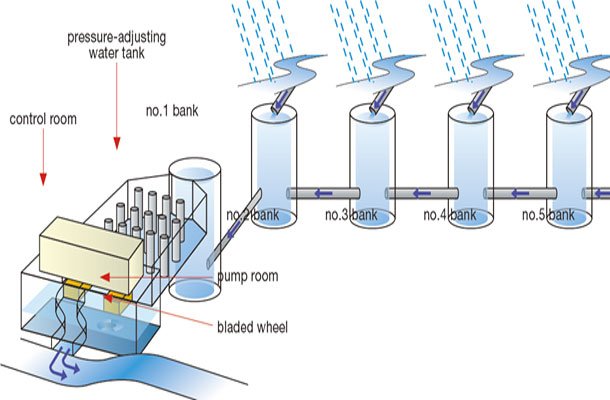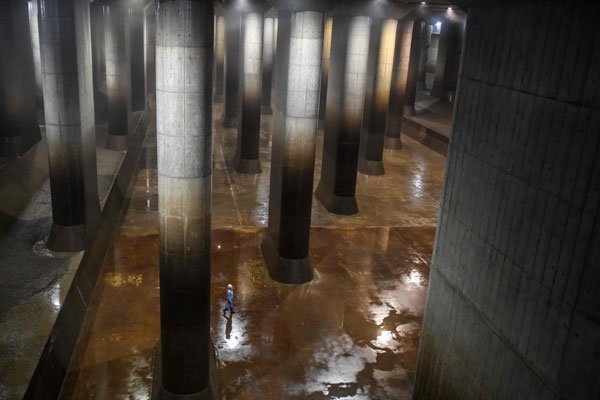Japan’s underground flood control tunnel
The first project, known as the Metropolitan Area Outer Underground Discharge Tunnel, or more simply as the “G-Cans Project,” was completed in 2009.
Published Date - 16 October 2020, 05:47 PM
Tokyo, one of the densest cities on the planet, is home to one of the most ambitious and enormous flood-control systems ever created. And it is almost entirely invisible to Tokyo residents as it is an underground tunnel. Two massive construction projects protect Japan’s capital from the ever-present threat of floods. Tokyo’s full flood control system is an engineering marvel and a global trailblazer in dealing with water in rapidly expanding urban areas.
The first project, known as the Metropolitan Area Outer Underground Discharge Tunnel, or more simply as the “G-Cans Project,” was completed in 2009.
The Discharge Channel is the world’s largest underground flood water diversion facility, built to mitigate overflowing of the city’s major waterways and rivers during rain and typhoon seasons. It is located between Showa in Tokyo and Kasukabe in Saitama prefecture, on the outskirts of the city of Tokyo in the Greater Tokyo Area, Japan.
Need for such facility

Japan has a climate in which floods and heavy rain tend to occur frequently, but on top of that, now global warming is advancing. In recent years, the rainy and typhoon seasons have brought regular destruction.
Massive flooding and landslides killed more than 80 people in west Japan this July, and a typhoon last year killed nearly one hundred people in the country’s east. Japan’s Meteorological Agency says the number of typhoons a year that threaten Tokyo has jumped 1.5 times in the last four decades.
Massive structure
Work on the project started in and consists of five concrete containment silos with heights of 65 m and diameters of 32 m, connected by 6.4 km of tunnels, 50 m beneath the surface, as well as a large water tank with a height of 25.4 m, with a length of 177 m, with a width of 78 m, and with 59 massive pillars connected to 78 10 MW (13,000 hp) pumps that can pump up to 200 tons of water into the Edo River per second.
Soaring pillars weighing 500 tons each support the main reservoir, a bare concrete tank the length of two soccer fields. Staff at the facility is on constant alert, especially during Japan’s rainy and typhoon seasons from June to late October.
Prevents widespread damage
The reservoir has helped reduce the number of homes affected by water damage in nearby areas by around 90 percent, he said. In Tokyo alone — a city cut through by more than 100 rivers — there are 10 other underground reservoirs and three flood tunnels, and more flood-protection structures are being built.
In Osaka, a flood facility similar to the Kasukabe reservoir is being built at a cost of 366 billion yen (over Rs 25,000 crore). Construction is scheduled to finish in 2044. This year it had already been used seven times by September, with water discharged twice after an unusually long rainy season, he added. Official studies credit the single facility with having saved 148 billion yen (over Rs 10,000 crore) in disaster clean-up costs so far.
Discharge of water

The Kasukabe reservoir is connected to a 6.3-kilometer tunnel and the system can release accumulated water into the nearby Edogawa river at a rate equivalent to discharging a 25-meter swimming pool every second, with the power of a jumbo-jet engine.
Built in 2006, at a cost of 230 billion yen, the facility swings into action around seven times a year. Excess water flows in automatically, and operators pump it out from the main tank when it approaches capacity.
Now you can get handpicked stories from Telangana Today on Telegram everyday. Click the link to subscribe.
Click to follow Telangana Today Facebook page and Twitter .